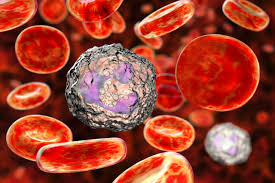Hi Bertie, I'll do my best. The very best way to adsorb out an auto-antibody is to use autologous red cells (i.e. auto-adsorption). Such an adsorption will take out any auto-antibody, leaving behind any alloantibody, however rare the specificity of the alloantibody may be. To put it another way, if the auto-antibody is panreactive, but underneath that is, say, an anti-Lan (an antibody directed against a very high frequency antigen), however many times you adsorb the patient's plasma with autologous red cells, you will not remove the anti-Lan because the patient is, by definition of the fact that the anti-Lan is an alloantibody, Lan Negative. BUT, you can only perform an auto-adsorption if you have sufficient red cells (which would be unusual - as a patient with an auto-antibody would normally have a low haemoglobin and haematocrit) and if the patient has not been transfused within the previous 3 months (unlikely, because of the low Hb and hct), because some of the transfused red cells may be present, and may take out the alloantibody. So, under such circumstances, you would have to go for a differential alloadsorption. It is important to remember, at this stage, that most (but not all by any means) auto-antibodies are directed against Rh antigens. It is, therefore, vital that you choose three different cells, one of which is R1R1, one of which is R2R2 and one of which is rr. These must be fully typed, so that one is Jk(a+b-), whilst another is Jk(a-b+), one is K+, etc, etc, so that any alloantibody is adsorbed out by one (or two) of the cells, but not by all three. The red cells used, initially anyway, should be enzyme-treated (to enhance any reaction between an Rh antibody/antigen). At this stage, of course, the MNS and Duffy type of the red cells does not matter, as these antigens will be destroyed by the action of the enzyme). The plasma is split into three aliquots, and each is then adsorbed by the R1R1, R2R2 or rr red cells. These are incubated at 37oC (usually, but, if a "cold" auto-antibody, or a mixed "cold"/warm auto-antibody is suspected, 4oC) for about 20 minutes. The mixture is then centrifuged, and the plasma, if initially in R1R1 red cells, transferred to another aliquot of (packed) R1R1 red cells (if R2R2 then to the next aliquot of R2R2 cells, and, if initially rr red cells, to the next aliquot of rr red cells). The incubation is repeated, as is the centrifugation and the transfer to the next aliquot of red cells. Eventually, the uto-antibody will be adsorbed out, and then all three (individual) plasma samples are panelled against your normal antibody identification panel. Any alloantibody will then become obvious (remembering, of course, that, if the alloantibody is, say, an anti-Jka, those cells used to adsorb the auto-antibody that are also Jk(a+b-) will have taken out the anti-Jka, but that those that are Jk(a-b+) will not have done so). Rarely, enzyme-treated red cells will not adsorb out the auto-antibody, in which case (unfortunately) you have to start all over again with non-enzyme-treated red cells. This is a complete pain, but, nonetheless, vital. Of course, either way, you will miss an antibody such as the anti-Lan I spoke about earlier, because the chances are that all three red cells will be Lan Positive (but you can't have everything. I hope this helps. By the way, the correct term is adsorption, rather than absorption. If you see water vapour condense onto a window (fogging it up), this is water vapour adsorbing onto the glass surface. If you see water going into a sponge, the water is being absorbed into the sponge. One is on the surface, whilst the other is in something. The antigens on a red cell are on the surface, rather than in the red cell cytosol, and so the antibody is adsorbed onto the surface of the red cell, rather than absorbed into the red cell. See also References (at the top of the page), choose Document Library from the drop down list, then Educational Material, go to page 2 and choose the PowerPoint lecture entitled "Laboratory Investigation od Autoimmune Haemolytic Anaemia". :):)



